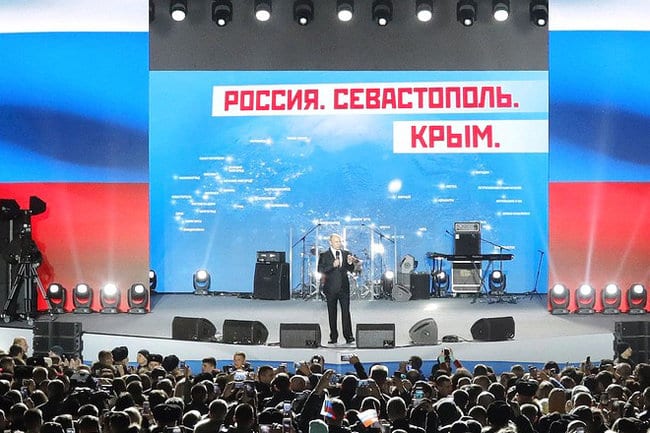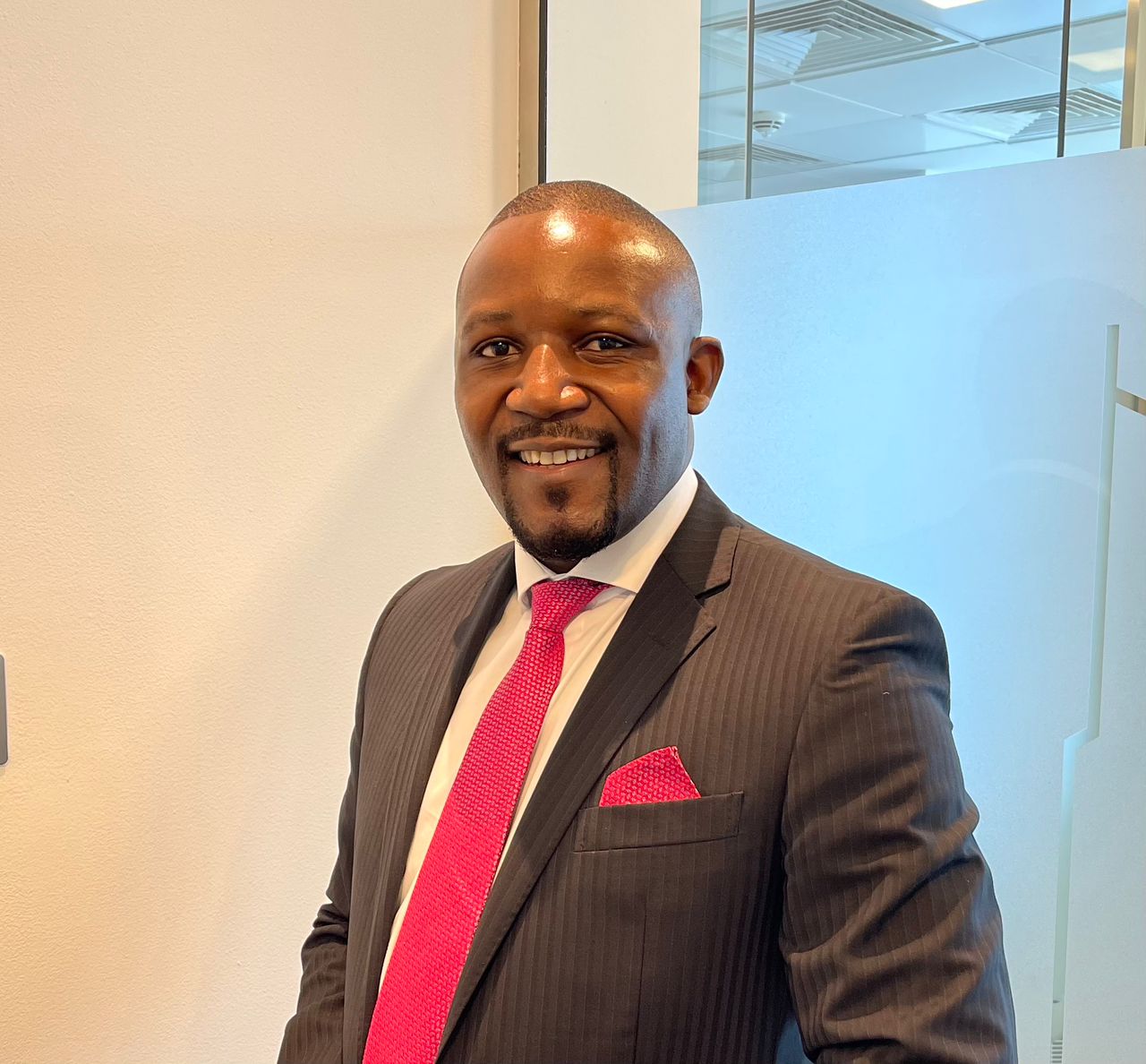On July 20, 2020, Vladimir Putin made his first working trip outside the Central Federal District for four months (since the quarantine has been enforced in the country). Until now, due to the coronavirus pandemic, the President of the Russian Federation has run all state affairs by video means and has not left Central Russia. And so the Russian leader – for the first time since the spread of the SARS-CoV-2 epidemic in the country – arrived in the Crimea, where he took part in the keel-laying ceremony of two universal landing ships of 23900 project at a shipyard in the seaport of Kerch.
It is quite noticeable that before this trip, Putinâs last visit (March 18-19 this year) was to another federal district on the Crimean peninsula. In general, over the past six years, the head of state and Moscow’s top officials have very often visited the peninsula detached from Ukraine in 2014. With their constant visits, they seemed to say to both the internal and, for the most part, the external audience: âCrimea is the territory of Russia and will always be so!â The Kremlin’s golden dream is the peninsula to be recognized as a part of Russia by the international community (primarily by the G7) and lifting of sanctions imposed on it for its occupation of Crimea. It is in order to convince the world community of the impossibility of returning Crimea to Ukraine that Vladimir Putin and other high-ranking officials visit the peninsula so often.
In turn, the world community, de facto, is quite lenient with such trips of the Russian president, despite the fact that, de jure, Crimea, according to the UN General Assembly resolution, is considered an annexed and occupied territory. As the chairman of the Mejlis of the Crimean Tatar people Refat Chubarov reasonably notes, the lack of a sharp reaction of the West to the frequent visits of Vladimir Putin and other powerful people to Crimea only encourages Moscow’s further aggression against its neighbors. According to R. Chubarov, Vladimir Putin’s last trip to the peninsula is least connected with the keel-laying ceremony of ships of the Russian Navy. In fact, the Russian leader is showing the world a cynical disregard for the rules of international law, which he does not intend to adhere to in the future. Against this background, the Mejlis called on the UN, the European Parliament, the PACE, the OSCE Parliamentary Assembly, the PABSEC, governments and parliaments to take additional tough economic, political and diplomatic measures to force Russia to liberate Ukraine’s occupied territories.
For its part, the Kremlin, seeking to protect its newly acquired territories, relies not so much on the Crimean-based Black Sea Fleet as on clearing the peninsula of all disloyal elements, primarily Ukrainian and Crimean Tatars. Thus, on June 28, this year in Russia, a so-called popular vote was held to approve a large number of amendments to the Constitution. One of the most important amendments was the statement about the fundamental impossibility of alienation of any territories from the Russian Federation. Immediately after that, the process of legislative registration of constitutional innovations began. Right then on July 14 the parliament passed the bill providing responsibility for violation of territorial integrity of the Russian Federation. Under the law, calls for the alienation of Russian territories will now be equated with extremism. It is assumed that calls to separatism, for the first time, will be fined under an administrative article in the amount of up to 500 thousand rubles ($ 7 thousand), and next time the violator will be prosecuted under the Criminal Code and imprisoned for 6 to 10 years.
As of today, the list of Crimean political prisoners who consider themselves citizens of Ukraine illegally detained by the Russian authorities includes at least 101 people, 77 of whom are Crimean Tatars.
In their pressure on groups disloyal to the Kremlin, the Russian police and special services do not stop for a day. One could assume that the occupying authorities will hold a loud demonstration trial to intimidate everyone and everything on the peninsula, and then calm down. For example, in 2015, a Russian court found Ukrainian filmmaker and writer Oleg Sentsov guilty of organizing a sabotage group and committing terrorist acts in Crimea, for which he was sentenced to 20 years in a high-security prison. The complete absurdity of this accusation was absolutely obvious to the international human rights institutions and governments of the Western states, which repeatedly spoke in defense of the Ukrainian political prisoner. However, Moscow demonstratively did not cede in this high-profile case and deliberately sent a native of the sunny-southern Crimea O. Sentsov to serve his sentence in the Russian Far North in a correctional camp with the eloquent name âPolar Bearâ.
Theoretically, with the trial of O. Sentsov, the Kremlin conveyed to the citizens of Russia, Ukraine, and, above all, Crimea, everything it wanted to say about the territorial affiliation of the occupied peninsula. However, every month sees someone being arrested in Crimea. While the Penal Code can provide many articles for the police and intelligence services for further enforecement, the latter usually do not wrestle with reasons for accountability. As a rule, Ukrainians are accused of sabotage and Crimean Tatars – of Islamist extremism. After all, any disloyal inhabitant of the peninsula may always be accused of separatism and public calls for the deoccupation of Crimea.
From the latest events, on June 10, this year five people of Slavic origin were arrested on charges of plotting a terrorist attack and public calls on the Internet to carry out extremist activities. And on July 7, this year regular searches were conducted in the homes of many Crimean Tatars, after which seven people were arrested on charges of being members of Hizbut-Tahrir religious organization (which had been operating legally within the peninsula in times of the Ukrainian government, but was declared terrorist after annexation). The true reason for the arrest of seven Crimean Tatars was that all the arrested were activists who attended trials over other Crimean Tatars and paid tribute of respect to the victims of the Stalinist regime’s repression and deportation of the Crimean Tatars.
In general, if after the revolution of 1917 the Crimean Tatars tried to establish their own republic within the peninsula, then later, throughout the twentieth century and until now, the Crimean Tatars were followed by bad luck: 1920-21 – the mass executions by the Bolsheviks in Crimea; 1921-23 – famine on the peninsula, which killed more than 75 thousand Crimean Tatars; 1944 – deportation of Crimean Tatars to Central Asia and other remote areas of the USSR, as a result of which more than 16 000 Crimean Tatars died; 1946-47 – up to 20 000 Crimean Tatars died during the famine in the USSR.
Only with the collapse of the USSR and the proclamation of the independence of the Ukrainian state in 1991 did the Crimean Tatars begin to return en masse to their historical homeland. Being part of Ukraine, the Crimean Tatars were able to convene the Kurultai (national parliament) and formed an executive body – the Mejlis of the Crimean Tatars (something like a national government). For two decades of independence of the Ukrainian state, the Crimean Tatars consistently advocated the territorial integrity of Ukraine as opposed to the pro-Russian separatist movement on the peninsula. And after the annexation of Crimea in March 2014, Russia declared the Mejlis an extremist organization, banning many Crimean Tatar leaders (including Mustafa Dzhemilev and Refat Chubarov) from entering the peninsula and launched a campaign of oppression of the Crimean Tatars not recognizing Crimea’s affiliation with Russia, although many Crimean Tatar families moved after annexation to mainland Ukraine and Turkey.
Those Crimean Tatars and ethnic Ukrainians who continue to live in the occupied territories are forcibly expelled by the Russian authorities under various pretexts or deliberately pulled out of the peninsula by creating unbearable living conditions for them. First of all, it is the southern coast of Crimea, Simferopol and Sevastopol, and also to a lesser extent – the central and northern Crimea. At the same time, the Russian authorities not only cleanse the peninsula of disloyal population, but also actively âimportâ ethnic Russians and various groups of Tatars from Russia (Volga, Astrakhan and Siberia).
In this way, the Kremlin is trying to completely change the demographic structure of the occupied peninsula and gain 100% loyalty from the local population, with the aim of gaining recognition from the world community of Crimea’s affiliation with Russia. One can only hope that ethnic Ukrainians and Crimean Tatars will manage to retain their homeland, and that democratic countries â to maintain their unanimous position on condemnation of annexation and occupation of Crimea by Russia.

